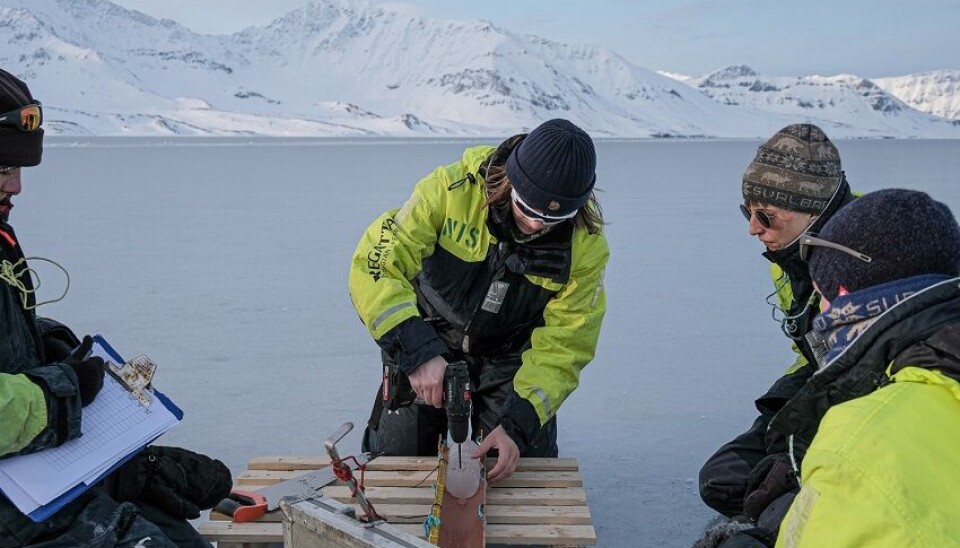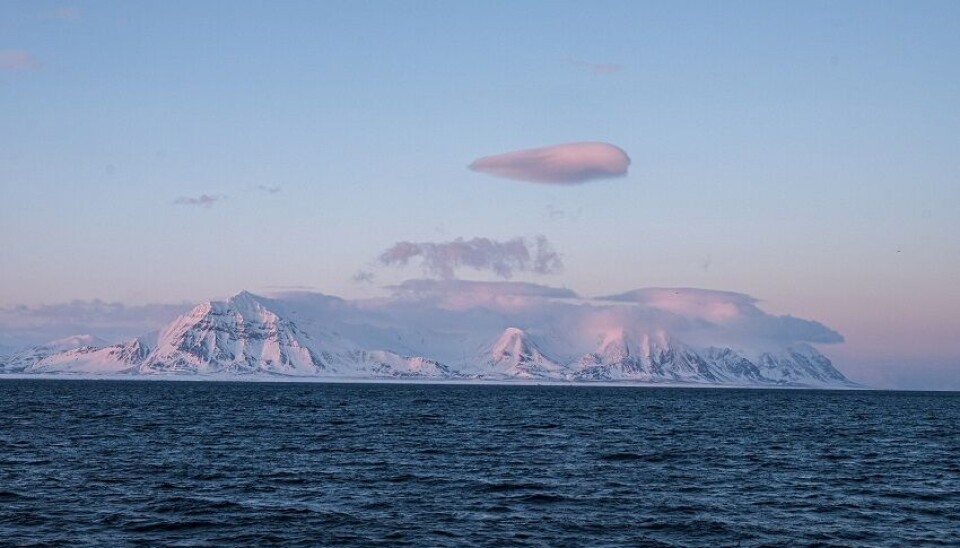Opinion:

Climate change: One year of warm currents fundamentally changed Spitsbergen’s sea ice coverage
OPINION: When meteorologists report fine weather on Svalbard, it's the air temperature they talk about. But when it comes to global warming, ocean temperature is the big joker.
Two of us have lived in Longyearbyen on Spitsbergen Island since 2001. A period of 20 years is short in a climate context where long time series are needed to distinguish natural variations from trends over a longer time period. Unfortunately, 20 years as a researcher in Svalbard has been enough to both see and feel climate change.
In this period of 20 years, we have lost sea ice in winter but gotten Atlantic cod in the fjords in summer and autumn. A few weeks of unnormal weather systems around Svalbard in early winter 2006 started a new state with persistent warm fjords. After a few abnormally warm days in January 2006, the air temperature again dropped to -20. However, the ocean was still warm and the sea ice melted and disappeared. This is an example of the sea being the joker that plays a crucial role in the climate system.
Warm water from the Caribbean
Norwegians learn early on that we can thank the Gulf Stream for the pleasant, mild climate along our coastline. The warm ocean current that transports warm water from the Caribbean Sea across the Atlantic, up along Norway and towards Svalbard ensures a mild, rainy climate in Bergen almost all year round. It is this current Norway must thank for the blooming apple trees in Hardanger in the spring, and for being able to ski in Lofoten in April, in shorts and a T-shirt.
As permanent residents of Svalbard, we also notice the effect of this Atlantic heat transport. In the Barents Sea south of the island Spitsbergen, it changes its name to the West Spitsbergen Current, but it is the same warm water from the Caribbean, which gives us increased sea temperatures and changed species diversity in Isfjorden.

A turning point in the ocean
What happened in the winter of 2006 then, which led to the dramatic change?
In January 2006, the atmospheric low pressures were lined up from the North Atlantic to the Fram Strait between Svalbard and Greenland, heading directly towards the Arctic. The normal route for these weather systems is east of Svalbard ending up in the Barents Sea, but the low pressures this winter were west of Svalbard, bringing warm air all the way from Spain to Svalbard.
Southerly wind west of Svalbard gave rise to three dramatic impacts on the sea ice; 1) warm air and ten January days with plus degrees, 2) a push of the existing sea ice around Svalbard northward into the Arctic, and 3) these southerly winds changed the current systems west of Svalbard. The result was a flooding of warm Atlantic water on the continental shelf along the west coast of Svalbard.
In February, the wind turned northerly again, and the air temperature dropped to -20°C. Despite the biting cold, the sea ice in Isfjorden, Kongsfjorden and the fjords along the west coast of Svalbard, dissolved and disappeared due to inflow of warmer water from the shelf outside. The fjords were kept ice free the whole winter and due to the large heat capacity of the ocean water, this excess heat was also able to heat up the atmosphere.
The ocean as a buffer
What we witnessed was that the northerly wind had slowed down the colder coastal current and hence “opened the door” to the fjords for all the warm water that had been redirected onto the shelf along the west coast of Svalbard. The sea temperature was over 3°C in the surface water in the West Spitsbergen fjords. Sea ice forms at -1.8°C, so the sea had no problems melting the ice, even though it was double-digit blue degrees in the air.
This pattern of first southerly wind flooding the continental shelf with warm water and then northerly winds opening up the fjords, has reoccurred more frequently in winter since 2006. Since it takes a normal cold winter to release all the heat from the Atlantic water, this reoccurring pattern has secured renewal of warm water and the fjords have been kept sea ice free.

The ocean acts as a buffer and a redistributor of the excess heat from the greenhouse effect. Much of the greenhouse gases we emit and most of the surplus heat from the greenhouse effect are taken up by the ocean over time instead of accumulating in the atmosphere. Therefore, it is in the sea we will find the answer to what the climate of the future will be, especially in the northern areas since this excess heat flows north and is released there. This is a crucial factor in the rise of the air temperature, which has risen more than twice as much around Svalbard compared with the global average temperature rise.
Life adapted to the polar sea areas will at some point suffer and be changed or collapse since a rise in temperature will lead to better conditions for species at lower latitudes and increased CO2 content will lead to ocean acidification. In addition, when water gets warmer, it expands. Together with the melting of ice on land, it causes the sea to rise.
Long-term changes
In the sea, all processes are 10 times slower than in the atmosphere, but it also means that temperature changes in the sea can affect Svalbard 10 times longer. The front between warm Atlantic water and cold water from the Arctic is around Svalbard, so a small shift of this front has major consequences for the sea temperature around Svalbard, the sea ice cover and which biological species will thrive in the fjords on Svalbard.
In the Arctic, the average annual temperature rises twice as much as in the rest of the world. Most of the increase can be explained by the ocean’s buffer function, and its ability to redistribute heat northwards. The heat capacity in the ocean is much greater than in the atmosphere. A temperature increase of around 1°C in the ocean can melt all the sea ice in the fjords on the west side and north of Svalbard, and at the same time emit enough heat to the atmosphere to explain the measured increase in air temperature locally on Svalbard.
A recently published study on Isfjorden shows clear changes in the fjord alongside the local warming climate and a great reduction in the fjord ice. During the last three decades, the temperature in the water in Isfjorden has increased by 1°C per decade in winter, a total of 3°C for the entire period. For the summer, the corresponding increase is almost 2°C over these three decades.

------
Share your science or have an opinion in the Researchers' zone
The ScienceNorway Researchers' zone consists of opinions, blogs and popular science pieces written by researchers and scientists from or based in Norway. Want to contribute? Send us an email!




























